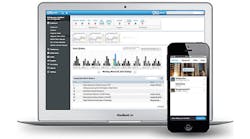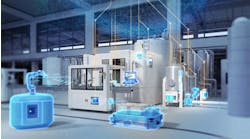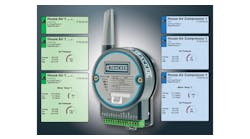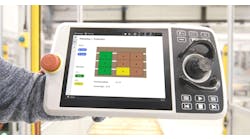Whether your manufacturing operation includes dozens or hundreds of machines, or is a fully-equipped production process involving vital infrastructure equipment, the maintenance management system entails the same processes — generating work orders, tracking asset condition, scheduling PM tasks, generating reports, and analyzing data. Managing these processes and procedures manually using spreadsheets in a constantly churning business world significantly increases the margin of errors and the number of delays and discrepancies.
So, how are you managing your maintenance schedules? Do you have a system in place? How are you tracking the performance of your maintenance plans? Have you analyzed your returns over the last year? Enterprises that wait for equipment to burnout end up spending much more in reactive maintenance than they would spend in preventive maintenance.
Simply switching from manual methods to a feature-rich, computerized maintenance management systems (CMMS) can help enterprises save up to 18% in costs incurred on repairs, reduce HVAC energy consumption by at least 20%, save at least 15% of the time spent processing information every day, and avoid negative reviews that can do significant damage to business reputation.
But, before diving into the business benefits of deploying computerized maintenance management systems, it is essential to calculate downtime losses to understand the difference automation can make.
Calculating the cost of downtime — Maintenance managers need to prepare accurate reports for tracking the performance of business operations and costs incurred on repairs, replacements, and maintenance. There are several downtime-cost calculators available online if you plan to take the manual approach, or you can also use the following formulas:
1. Cost of lost productivity per hour = average employee salary divided by total work hours multiplied by the total number of employees affected during machine downtime
2. Employees affected during shutdown = the percentage of employees who were sitting idle due to equipment shut down
3. Loss of revenue = an estimate of revenue lost in percentage during equipment downtime
4. Loss of units = the average number of units produced every hour
5. Loss of profit = the profit earned on the sale of every unit produced
Translating losses into profits by boosting productivity — CMMS plays a crucial role in reducing downtime, lowering maintenance costs, boosting productivity and increasing profits but fundamentally it all happens by maximizing machine uptime. Here are six CMMS features enterprises can leverage to automate maintenance management practices and streamline operations:
1. Prevents expensive equipment failures — With an efficient preventive maintenance program in place, enterprises can ensure timely maintenance scheduling of vital equipment which in turn will result in lesser breakdowns. When machines are regularly inspected and maintained, the risk of accidents is reduced as well.
2. Extends the service life of machines — CMMS systems facilitate mobile management of maintenance tasks making it much easier to plan capital expenditures and prioritize equipment maintenance. Since a CMMS captures, stores, records and tracks PM schedules and work orders including parts, labor, and asset history, it helps facility managers make informed operational decisions concerning resource allocation, repairs, and replacements to extend the service life of assets.
3. Ensures just-in-time maintenance — According to a survey published by Plant Engineering, more than 50% of enterprises have reported that most of their maintenance tasks take place after an unexpected equipment failure. Computerized maintenance management systems track assets in real-time, so in cases of performance issues that need corrective maintenance, the system instantly triggers a work request to keep assets from failing and ensures timely completion of repairs and replacements.
4. Streamlines maintenance schedules — Asset management software facilitates seamless communication between facility managers and the maintenance crew. This ensures prompt allocation of work requests, faster completion of maintenance tasks, and timely reporting of work progress without needing any paperwork or redundant emails. It saves a lot of travel time, unnecessary effort and automates processes which in turn translate to improved machine uptime and reduced repair costs.
5. Improves inventory control — Asset management software comes with features to track inventory levels and matches these with maintenance demands. This is especially helpful for plants that stock expensive replacement parts with longer lead times. It allows maintenance technicians to search and share parts inventory in real-time, and prevents sudden equipment breakdowns while facilitating faster troubleshooting to increase machine uptime. As every spare part is linked to the relevant vendor information, the system also sends a notification when new replacement parts need to be purchased.
6. Facilitates condition-based monitoring — Condition-based monitoring ensures just-in-time repairs and maintenance before the asset performance goes down and problems surface. It employs the use of monitoring sensors that may be ultrasonic, electrical, or infrared, depending on the type of equipment and the nature of operations. With real-time insights into performance data, it keeps mission-critical machinery up and running and automatically triggers a work request when abnormalities are recorded.
Modern CMMS systems are user-friendly, easy-to-customize, and help ensure that assets work at peak efficiency year-round. Investing in mobile CMMS is the easiest way to maximize ROI while keeping pace with changing technology that moves your organization towards sustainable success.
Lindsey Walker is the marketing manager for NEXGEN Asset Management. Contact her at [email protected]









